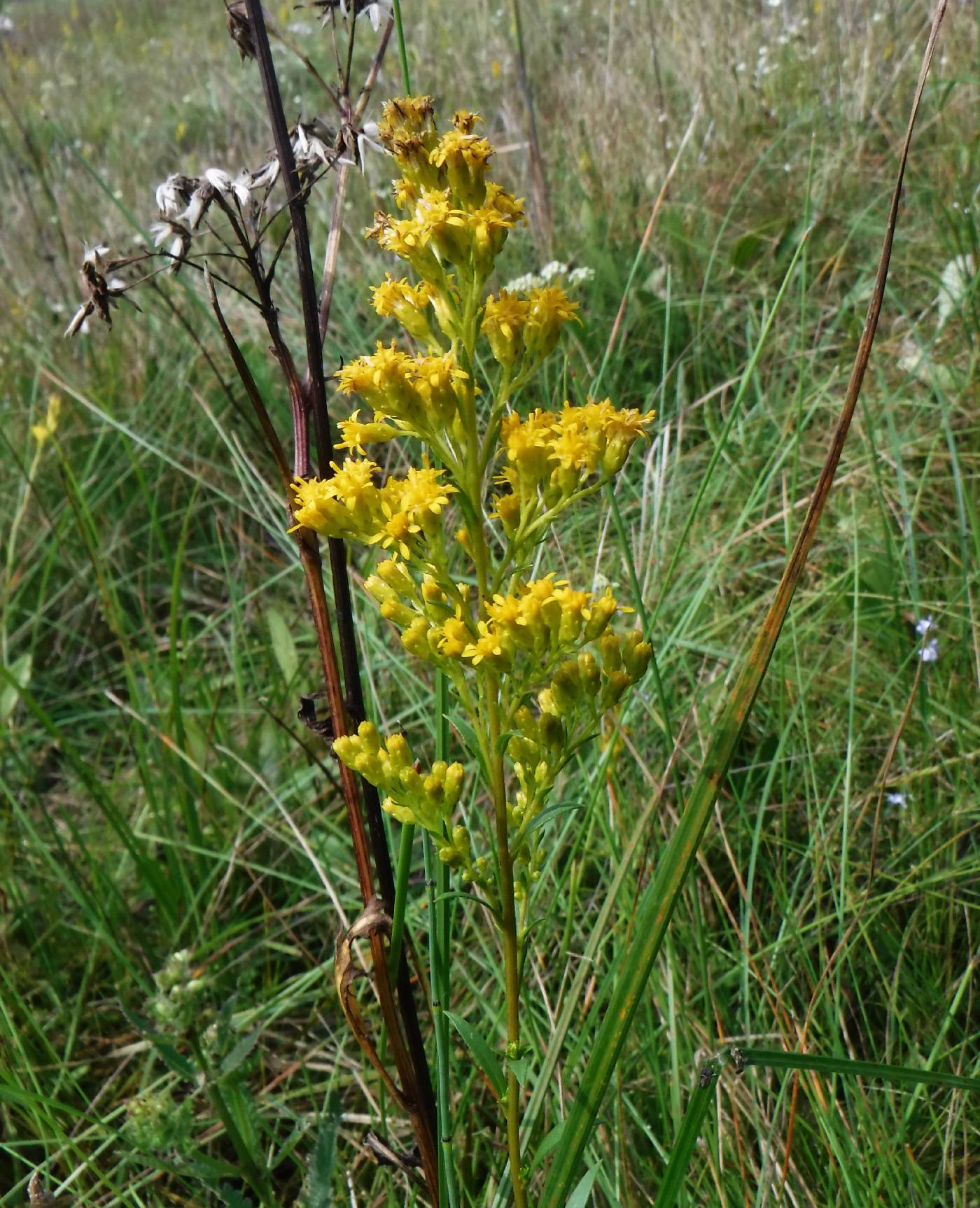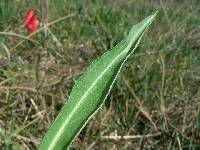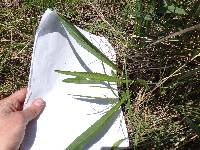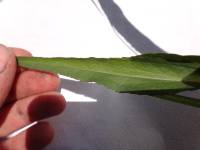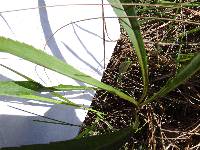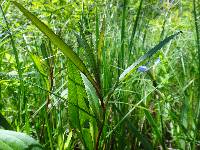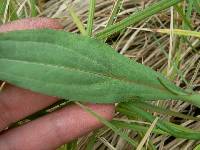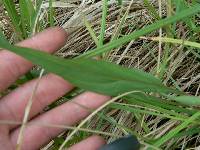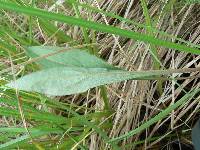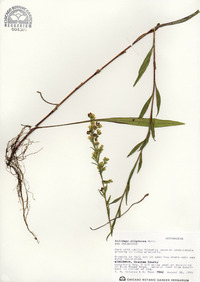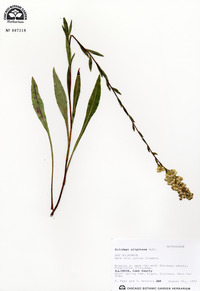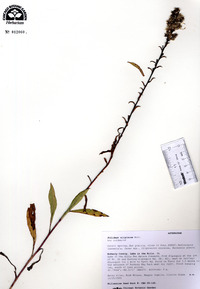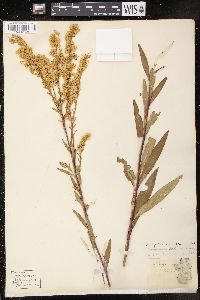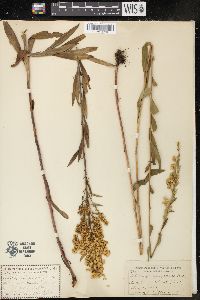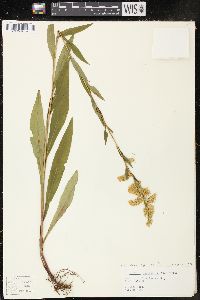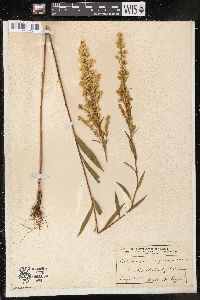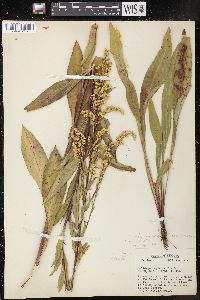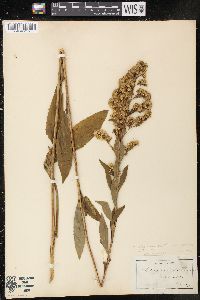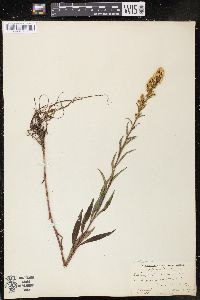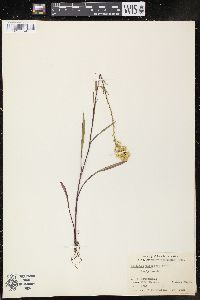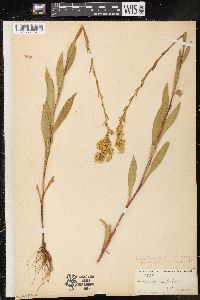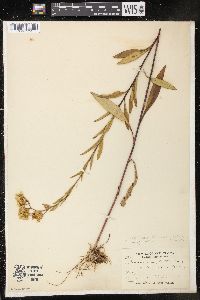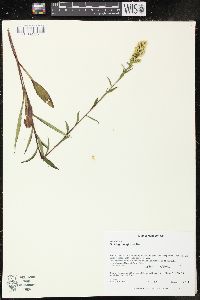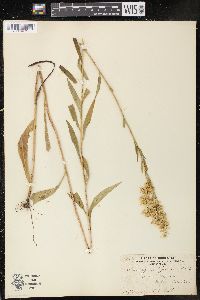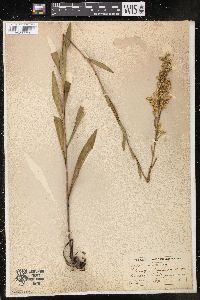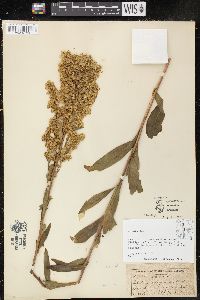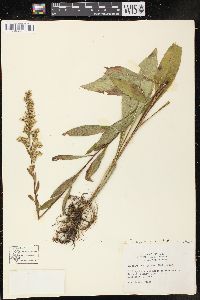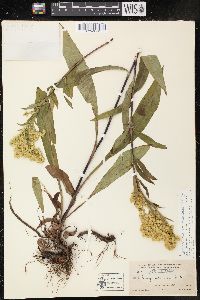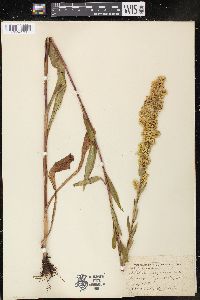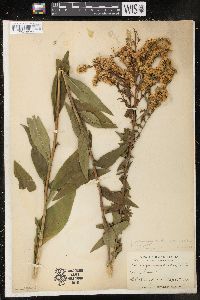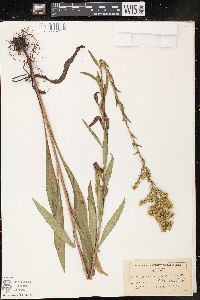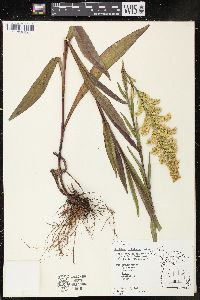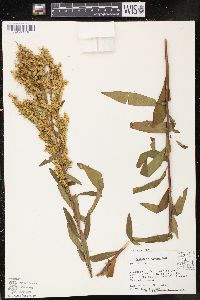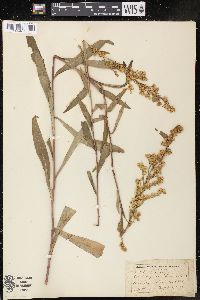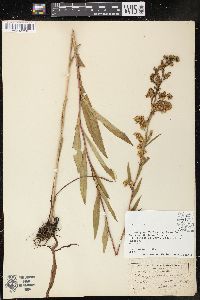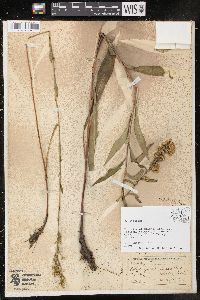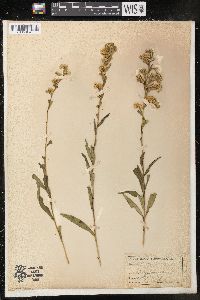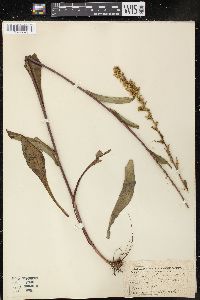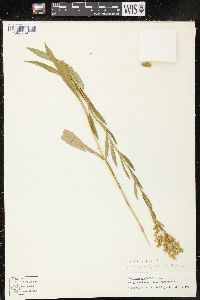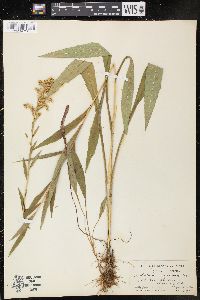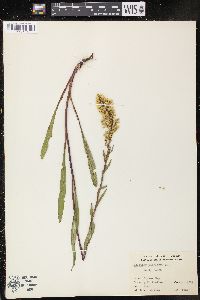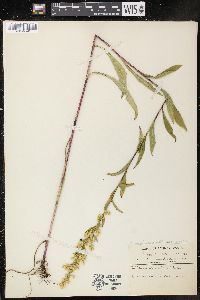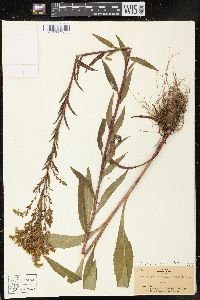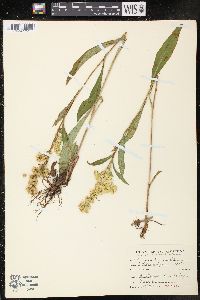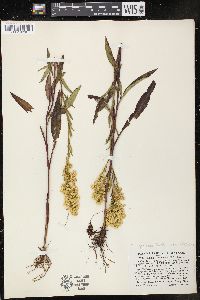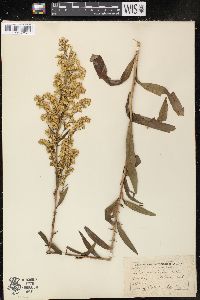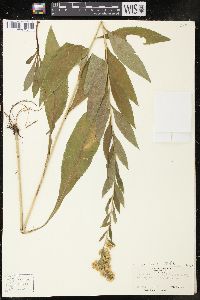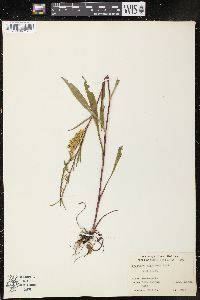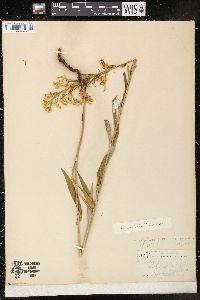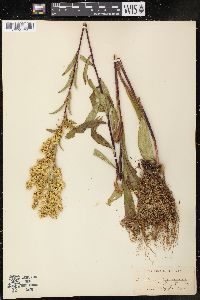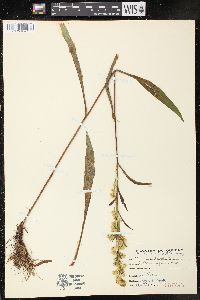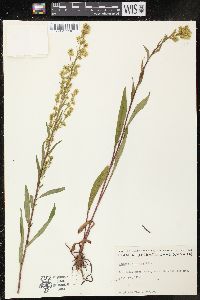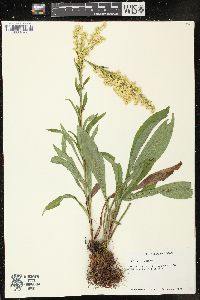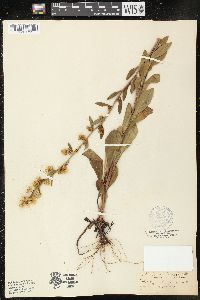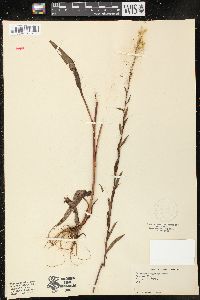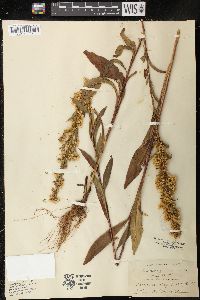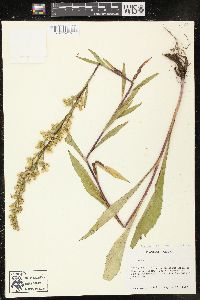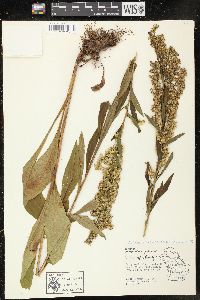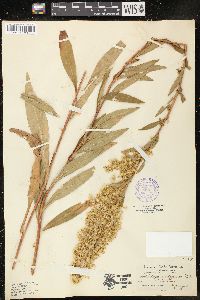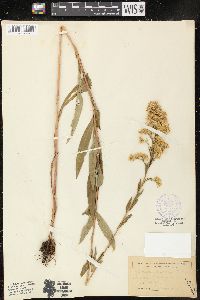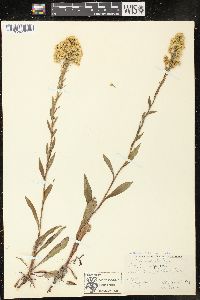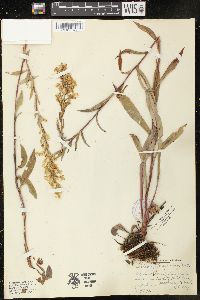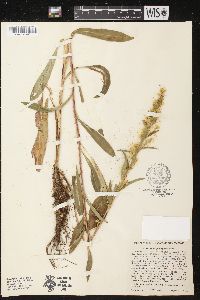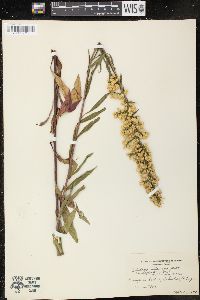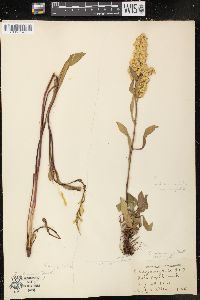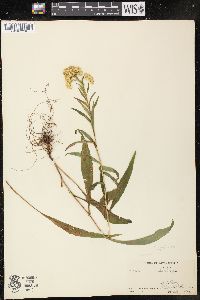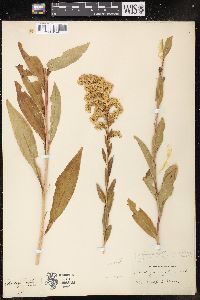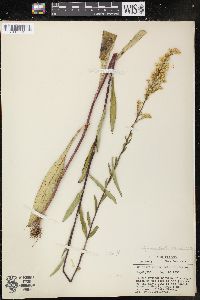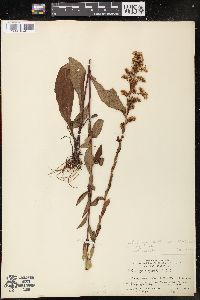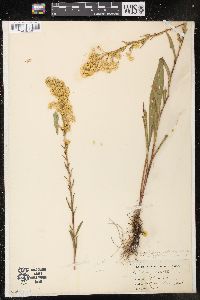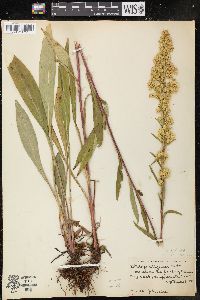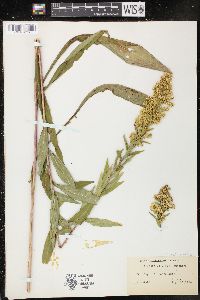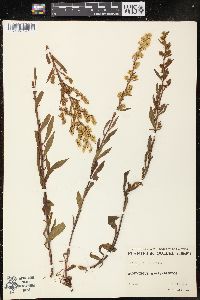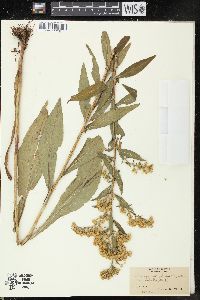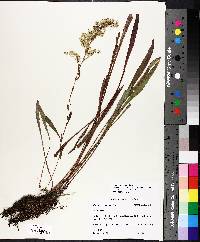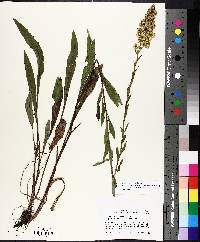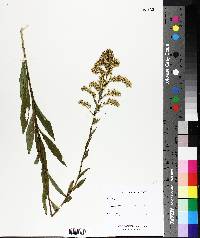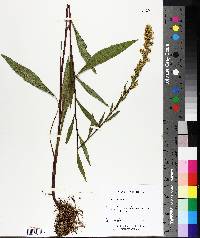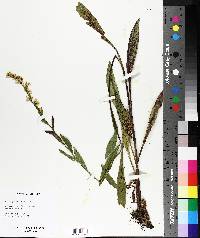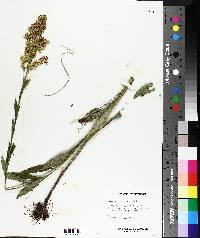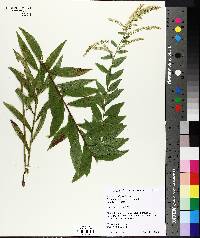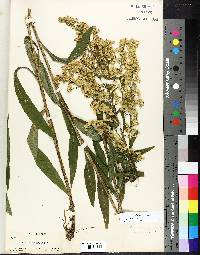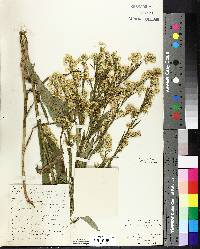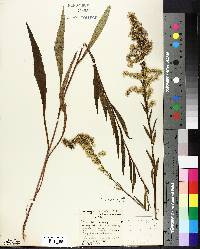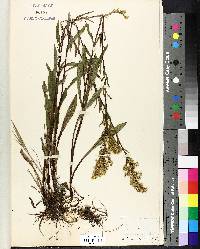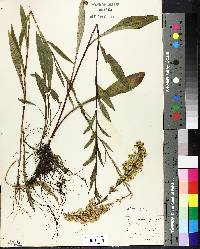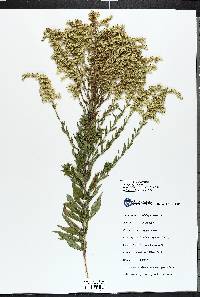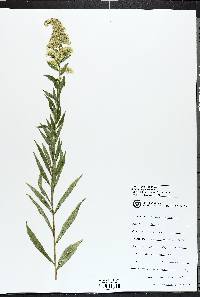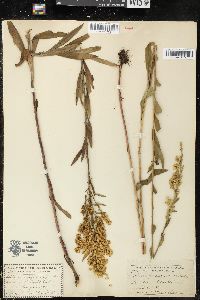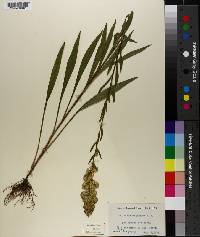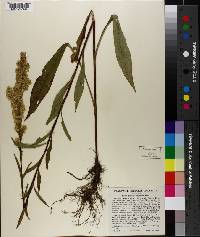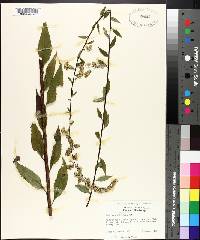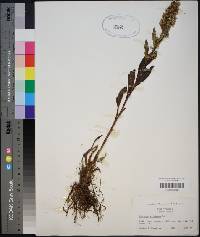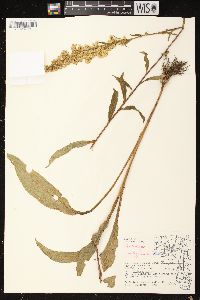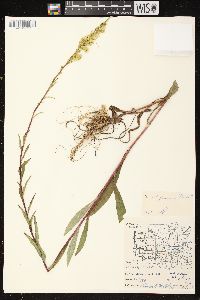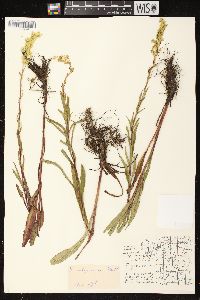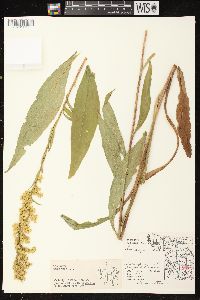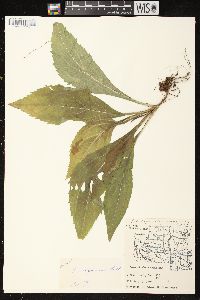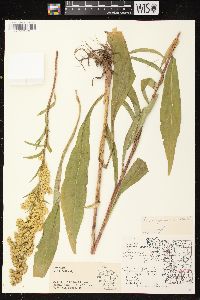Solidago uliginosa
|
|
|
|
Family: Asteraceae
Bog Goldenrod
[Solidago humilis var. abbei B. Boivin, moreSolidago humilis var. peracuta Fern., Solidago klughii Fern., Solidago neglecta var. simulata Farw., Solidago terrae-novae Torr. & A. Gray, Solidago uniligulata var. neglecta] |
Plants 30-120(-200) cm; rhizomes branched, elongate, thick. Stems usually 1, erect, glabrous, short hispido-strigose in arrays. Leaves: basal and proximal cauline tapering to long petioles that partially sheath stems; blades oblanceolate, 100-350 × 5-60 mm, margins subentire to serrate, apices acute; mid to distal sessile, not sheathing stems, blades lanceolate, 20-50 × 5-10 mm, much reduced distally, margins entire. Heads 35-230 in elongate paniculiform arrays, sometimes narrow and secund pyramidal, usually narrowly to broadly, non-secund thyrsiform; branches strongly ascending with non-secund heads to arching with heads secund. Peduncles 1-4 mm, glabrous or sparsely strigose. Involucres 3-5 mm. Phyllaries (14-18) in 3-5 series, unequal, usually apically ciliate; outer ovate, acute, inner linear-oblong, obtuse. Ray florets 1-8 (moderately conspicuous); laminae 3.2-3.7 × 0.4-0.6 mm. Disc florets 6-8; corollas 4.6-5 mm, lobes 0.6-1 mm. Cypselae 1-2 mm, glabrous or sparsely strigillose; pappi 2.7-3 mm (weakly clavate). 2n = 18, 36. Flowering Aug-Sep. Bogs and wet areas, marshes, sometimes in wet woods; 0-1500+ m; St. Pierre and Miquelon; Man., N.B., Nfld. and Labr. , N.S., Ont., P.E.I., Que.; Ala., Conn., Del., Ga., Ill., Ind., Maine, Mich., Minn., N.H., N.Y., N.C., Pa., Tenn., Vt., Va., W.Va., Wis. Solidago uliginosa is highly variable in stem height and the size of the array, which are greatly influenced by growing conditions. A. Cronquist (1980) treated S. simulans as a 'broad-leaved extreme of S. gracillima, approaching S. uliginosa.' These plants come from a distinctive habitat in western North Carolina, south of more typical populations of S. uliginosa; it might warrant recognition as a narrowly distributed endemic. In the north, several different tetraploid races within the species appear to be derived separately from diploids in the eastern and the Great Lakes portion of the range.
Plants to 15 dm from a rather long, branched caudex, glabrous except for the usually puberulent infl; lvs basally disposed, the larger ones elongate, oblanceolate to narrowly elliptic, subentire to evidently serrate, tapering to a long petiole with ±sheathing base, the blade and petiole 6-35 cm נ6-60 mm, mostly 6-15 times as long as wide; cauline lvs progressively reduced, not especially numerous; infl much longer than broad, the branches straight and not secund to evidently recurved-secund, but then rather short; invol 3-5 mm, its inner bracts mostly obtuse or rounded, the outer often acute; rays 1-8; achenes glabrous or occasionally hirtellous; 2n=18, 36, the tetraploids more southern or in more calcareous habitats. Bogs and fens; Nf. and Que. to Minn., s. to Md., O., Ind., and in the mts. to N.C. and Tenn. (S. linoides; S. neglecta; S. purshii; S. uniligulata) Gleason, Henry A. & Cronquist, Arthur J. 1991. Manual of vascular plants of northeastern United States and adjacent Canada. lxxv + 910 pp. ©The New York Botanical Garden. All rights reserved. Used by permission. From Flora of Indiana (1940) by Charles C. Deam Infrequent throughout the lake area and in a few springy places south of it. This goldenrod is strictly a bog and marsh plant. It is conspicuously variable in size, in branching of the inflorescence, and in the number of rays to a head. I have had an opportunity to study it in several places where it grew in abundance. One place was a decadent marsh on the south side of Little Long Lake, Noble County. This marsh covered about an acre and in places large colonies of Cornus and Salix were established on the border. In the center of the marsh, which was the wettest part, grew very slender plants of this species, while in the drier part on the border of the shrub zone, grew larger and branched plants. Between these two extreme habitats intermediate plants were found. I collected a large series for future study which has convinced me that the difference in the plants was a result of environment. The reason for the difference, I do not know. I have found this species in both marl and peaty habitats. [Deam also mentions var. levipes:] I think this is merely a glabrous form of the species and is found with it. …… Indiana Coefficient of Conservatism: C = 10 Wetland Indicator Status: OBL |

